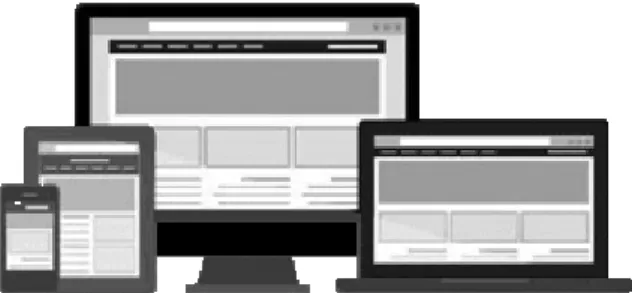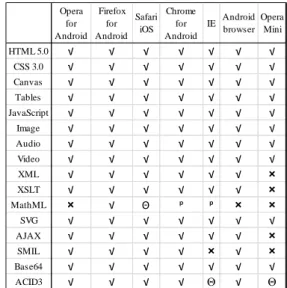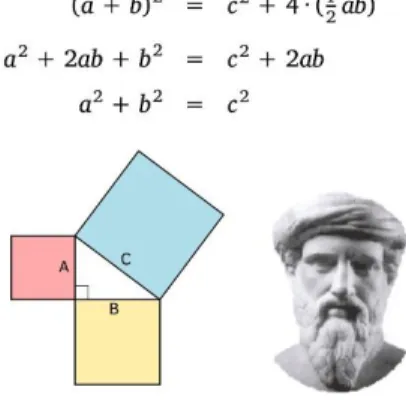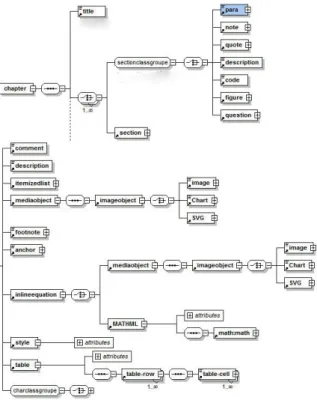HAL Id: hal-01710160
https://hal-amu.archives-ouvertes.fr/hal-01710160
Submitted on 18 May 2018
HAL is a multi-disciplinary open access
archive for the deposit and dissemination of
sci-entific research documents, whether they are
pub-lished or not. The documents may come from
teaching and research institutions in France or
abroad, or from public or private research centers.
L’archive ouverte pluridisciplinaire HAL, est
destinée au dépôt et à la diffusion de documents
scientifiques de niveau recherche, publiés ou non,
émanant des établissements d’enseignement et de
recherche français ou étrangers, des laboratoires
publics ou privés.
Responsive Course Design - An Adaptive Approach to
Designing Responsive m-Learning
Ivan Madjarov
To cite this version:
Ivan Madjarov. Responsive Course Design - An Adaptive Approach to Designing Responsive
m-Learning. 8th International Conference on Computer Supported Education, CSEDU, Apr 2016, Rome,
Italy. �10.5220/0005782802750280�. �hal-01710160�
RESPONSIVE COURSE DESIGN
An Adaptive Approach to Designing Responsive m-Learning
Ivan MADJAROV
Aix Marseille Université, CNRS, ENSAM, Université de Toulon, LSIS UMR 7296, 13397, Marseille, France
ivan.madjarov@lsis.org
Keywords: Responsive m-Learning Design, Responsive Web design, Web services, Content adaptation.
Abstract: The ubiquitous availability of a wide range of Internet connected mobile devices makes possible to dedicate small amounts of spare time for mobile learning. The limited screen size makes current mobile devices quite hard to visualize multifaceted web pages, so this kind of content could be adjusted to meet the device needs. CMS-based websites, in general, are designed for large screens and when users go online with mobile phones, smartphones and tablets they feel some discomfort. The usability and user experience may be reduced when interacting with learning platforms that are not optimized for such features. A possible solution has arisen with recent advances in Responsive Web Design specifications. This adaptive web design technique advocates a single self-adaptive interface and avoids thereby multiplication of information sources and technical supports and promotes the possibility to design adaptive e-Learning courses and adaptive e-Learning mobile applications. In this paper we discuss about the possibilities of Responsive Web Design technique to adapt a learning content compared to an adaptive service-based approach to design responsive learning contents for m-Learning usage.
1. INTRODUCTION
With the advent of connected phones, smartphones and tablets web users have gradually changed behavior. Website developers in majority have reacted by duplicating the content to make one version suitable for the small screen of mobile units and another standardized version for wide screens of desktops and laptops. It is obvious that this approach is impractical and does not really fit the needs of mobile web browsers users. On the other hand, web browsers in mobile devices typically render a given web page without taking into account the difference in the user's visual requirements (Sunkara, 2014).
The Responsive Web Design (RWD) is a solution for content adaptation on different connected mobiles units (Ben, 2013). RWD essentially means that the content presented on a device will adjust to fit the screen size it detects (Marcotte, 2011). This new technology is changing the way to design a website. User interfaces are no longer fixed and they are adapted automatically to any medium (desktops,
laptops, smartphones, tablets, TV, etc.) without any zooming. Zooming, in particular, significantly accentuates the flawed ergonomics sensation especially on touch devices.
Our motivation for this paper is inspired by two factors: (1) Our university curriculum in computer network and telecommunication offers students modules that handle web development problems, design and administration. In these modules the competencies for RWD implementing are directly targeted. (2) The pedagogical policy of our university is to provide in the near future more than 30% of online courses (MOOC). This has an impact on our courses, not only about the content, but also for the form if one wishes to facilitate the "mobile" access to our pedagogy and encourage students to enjoy at their leisure, without limits, even moving. Today, students are rarely limited on desktop stations because they often revise in transit or elsewhere using their smartphone or tablet. It is therefore crucial that RWD and e-Learning become interrelated so that students can learn their lessons in the most ergonomic way.
Following tests, carried out as part of tutored project, we found that the implementation of RWD in Moodle or Dokeos Learning Content Management
Systems (LCMS) for course authors is a difficult task and vary from one system version to another. So, authors are pushed towards a noncommercial and practical solution that is to manually tag the web page and the style file or to use an HTML-compatible editor that better respects the break-points defined by CSS.
In this paper, we discuss and compare some solutions. The paper is organized as follows: first in section 2 we present the state of the art for a responsive e-Learning and related work. In section 3 we present a use case scenario for responsive e-Learning design and a services-based approach. Finally, in section 4 we conclude with some comments about future developments related to this work.
2. BACKGROUND AND
MOTIVATION
An obstacle to open and ubiquitous learning is that mobile devices may have several different hardware and software features. The usability and the user experience may be reduced when interacting with learning platforms that are not optimized for such features. This heterogeneity of resources and devices makes the design of e-Learning content a relevant issue. So, approaches to design websites and applications that are responsive and adaptive to different kinds of devices in different contexts becomes an important task.
Solutions based on applications for mobile devices (native applications) exploit to the full the device's features, but they are platform specific and must be developed, updated and managed separately. Web-based solutions, on the contrary, follow the principles of open Web and run in standards-compatible web browser. As a consequence, being not developed for a specific device, web-based solutions are typically less powerful and with a poorer look and feel when accessed through a mobile device. An answer to this problem has been the use of techniques borrowed from adaptive hypermedia systems. Device feature include browser version and platform, availability of plug-ins, band-width, display size, input size. Adaptive techniques are an effective solution but their design and implementation is costly and time consuming.
An alternative solution is RWD. This paradigm exploits new specifications for web technologies in particular HTML5 and CSS3 to deploy websites that respond to the user's media environment. RWD
enables web applications to have a better look and feel and enables user interfaces to dynamically suite the user device without the implementation of specialized adaptive modules.
2.1 Related Work
In the field of adaptive web design we can enumerate three categories of approaches (Koehl, 2012):
Platform-specific mobile design includes mobile mark-up languages (XHTML Mobile Profile; WML) and various graphical authoring tools to facilitate the creation of a mobile website. The platform-specific mobile design needs mobile designers to invest a significant amount of manual efforts on implementing a mobile website, which is especially optimized to fit the distinct features of mobile devices. Web page restructuring supports browsing a
desktop webpage on a mobile device by adapting the original layout. It first segments a desktop webpage into semantically related information blocks (i.e., page segmentation) and then provides a semantics-directed adaptation (Madjarov, 2012).
Zooming based interaction avoids adaptation, and provides an alternative solution to support browsing desktop webpages on mobile devices. It displays a desktop webpage within a mobile screen as an overview, and provides a mobile-friendly navigation facility to efficiently zoom in on any portion for a detailed reading. In (Koehl, 2012) a complex work is presented. A site administrator visually selects objects within a web page, and assigns one or more attributes to page objects from a rich collection of predefined page modifications. The proposed system then generates code for a multi-session, php-based proxy server to provide dynamic mobile content adaptations based on the selected attributes. The proposed adaptation approach cannot be computed on demand or in an independent manner.
2.2 Responsive m-Learning
For an adaptive m-Learning it is important to have visuals that communicate effectively on all display sizes and so to deliver user-friendly learning content on multiple devices. To achieve this goal, as mentioned above, we can proceed either by developing a different version for every target device and browser or by the implementation of the RWD technique for our courses. To apply this technique to
responsive e-Learning (m-Learning) we can define three key technical features (Baturay, 2013):
2.2.1 Screen Resolutions with CSS3 Media Queries
Flexibility is the key factor to take in consideration when designing responsive e-Learning courses so that the learning content can be restructured and adjusted to fit different screen sizes and resolutions.
Figure 1: The main Responsive Web Design task: reshaping depending on screen sizes and resolutions.
Media queries, as part of CSS3 recommended standard, return information on devices physical specifications (width, height, orientation, resolution, etc.). So, different styles can be delivered to different devices in order to offer the best visual experience to each user. With Media Queries we can build multiple layouts and direct the fluid grid and flexible images to be aligned to the device dimensions.
A best practice is to define breakpoints for each layout to cover the largest, medium and smallest screen sizes e.g. a desktop, a portrait tablet, and a portrait smartphone. A breakpoint defines the size at which the style rules change and the elements in the layouts are dynamically resized and readjusted to fit screen sizes. As suggested in (Baturay, 2013) and shown in Figure 1, we can base our responsive design on three breakpoints, e.g. 1024px for largest screen, 768px for medium screen size and 320px for smallest screen size.
2.2.2 Fluid Grid Layouts
A traditional e-Learning course design consists of texts, tables, frames and images. For each element, stored in e-Learning system, is assigned a fixed or absolute value in pixels, which specifies exactly his size when displayed on the required web page. With a fluid grid design, the size of each cell in the grid and its contents is defined in relative terms, in proportion to its container. Containers, fonts and images are
assigned relative rather than absolute values, expressed as percentages or ems.
The "em" is defined as a size relative to its parent unit, i.e. the web browser. So, we can set 1em to be equal to the browser's default font size which in general is 16px (Marcotte, 2011). From there on, we can structure learning content and set relative font sizes in "ems" for texts in different layouts.
The font type is another not insignificant detail. Serif fonts are more difficult to read on digital devices, so it is recommended to select a sans serif font (Rasmussen, 2014).
2.2.3 Flexible and Scalable Images and Media
Most of e-Learning courses include either raster images or vector graphics or animations. Image flexibility is another important point to consider in the responsive context. This point allows images to be moved and be scaled proportionally on the screen size. Scaling or cropping eliminates the need to upload multiple versions (resolutions) of the same image on the server.
Scaling operation resizes image to screen size. For this it is recommended to use bigger images and dynamically scale them down based on information about device size. Scaling smaller image up may lead to quality loss.
Cropping operation means using a larger image and then reducing its size by cutting the image around a focus area that holds the essential area. This operation is preferred when images are scaled to a very small size and their meaning gets lost because one no longer sees the details.
A combination of these operations is always possible to dynamically crop and then scale image to device size.
A flexible solution that bypasses the problem of screen resolution is to use or to convert animations and schemas to Scalable Vector Graphics (SVG). The SVG format is XML based and can be manipulated and styled just like any other HTML element. This format is natively recognized by most Web browsers, (for details see Figure 2).
2.3 Responsive e-Learning Design
Limitations
The RWD approach (1) is not presented as a panacea and cannot settle all issues related to a complex pedagogical content, (2) it is not straightforward to adapt an existing course, (3) a new
course requires careful preparation, (4) there are few technical things to consider when implement:
Not all mobile browsers and devices support all CSS3 features. For some former models pronounced incompatibilities are observed. The responsive technique aims to resize
content for any device, but in practice there will always be some mobile devices with unusual resolutions.
The responsive technique aims also to resize bitmap image. This process may impact the mobile unit's performance because the full image is downloaded on a user’s device and then scaled and cropped to fit the screen. An e-Learning course that presents multiple
multimedia concepts is less easy to adapt for scaling down.
3. SERVICES-BASED APPROACH
FOR RESPONSIVE E-LEARNING
DESIGN
3.1 Use Case Scenario
In content adaptation, one challenge is to group semantically related information since the HTML specification does not reveal an information organization (Roudaki, 2015). To cover all device capabilities and to lead an efficient course adaptation process we advocate for a semantically clear format for learning content repository and content mining.
To deliver a single version of a course to multiple devices we adopt service oriented approach. So, we can show different content on different devices and we can adapt content depending on the context, e.g. provide learners a highlighted summary of a larger course on mobile devices as a refresher. The full content is downloaded if requested in adapted format. We favor the scroll instead of single page style by learning activity. This technique is more suited to mobile units without zooming or horizontal scrolling. In case we have some complex multimedia elements on a desktop version, we may decide depends on the mobiles characteristics to substitute this content with an alternative text or audio description. Because of these difficulties and limits, we think that in certain cases making the entire course available on mobile devices may not be the best approach. The main idea here is to make e-Learning content independent of his presentation by adopting a unified XML based format for learning content
storage, editing and searching. This approach greatly facilitates content adaptation, (data) extraction and content (data) integration in a composite course on demand (mining).
3.2 Mobile Browsers Responsive
Compatibility
A study conducted in late 2013 shows that 50% of mobile phone users use mobile as their primary Internet source (Roudaki, 2015). However, the development of mobile websites and especially for LCMS lags behind mobile devices.
We have created courses for some informatics modules using authoring tools accessible in LCMS Moodle and Dokeos and we have had multiple requests from students for options that they could run on Smartphones to fit the content on the screen size to obtain better legibility.
To proof the content portability for mobile browsers, we have processed by several tests. We put a representative selection of mobile browsers through a series of web pages under mentored projects. For this experience a common type of web pages were designed by students, not especially to work on small screens.
Figure 2: Mobile browsers tests results for Web options support: Θ partially supported; √ supported; none supported; p plug-in needed.
The results of conducted tests are shown in Figure 2. The results analysis confirms that a multimedia pedagogical content, which is especially appreciated by students, is suitable on mobile browsers.
Opera for Android Firefox for Android Safari iOS Chrome for Android IE Android browser Opera Mini HTML 5.0 √ √ √ √ √ √ √ CSS 3.0 √ √ √ √ √ √ √ Canvas √ √ √ √ √ √ √ Tables √ √ √ √ √ √ √ JavaScript √ √ √ √ √ √ √ Image √ √ √ √ √ √ √ Audio √ √ √ √ √ √ √ Video √ √ √ √ √ √ √ XML √ √ √ √ √ √ XSLT √ √ √ √ √ √ MathML √ Θ ᵖ ᵖ SVG √ √ √ √ √ √ √ AJAX √ √ √ √ √ √ SMIL √ √ √ √ √ Base64 √ √ √ √ √ √ √ ACID3 √ √ √ √ Θ √ Θ
Figure 3: HTML5 page with CSS3 styled text, MathML, SVG and raster image in Firefox mobile browser (available at: http://139.124.26.245/tbrowser/).
Figure 4: Fragment of source code from Web page in Figure 3 with stylesheet breakpoints, MathML, SVG and Base64-encoded image.
The essential problem to manage here does not focus on the complexity of pedagogical hypermedia content, but its responsive presentation on small-screen devices. This process include the development of a suitable page-adaptation technique that analyzes course structure and generates pages into logically related units to be fitted to mobile device browser (Madjarov, 2012).
MathML is part of HTML5 standard and it is supported natively or via plug-ins by the majority of modern browsers. A scientific content can serve in standards-compliant HTML pages some MathML equations. But this is not necessarily true for the mobile versions of these browsers. Our tests, conducted with some basic MathML elements, prove that only the mobile version of Firefox web browser provides complete satisfaction. In Figure 3 and Figure 4 the MathML script is natively interpreted by the Firefox browser mobile version. Other tested browsers required for the same task additional resources as shown in Figure 2 for each tested mobile browser.
Tests (Figure 3 and Figure 4) also show the natively compatibility of SVG scripts for vector graphics visualization for all tested browsers. This point is important and may replace in certain cases the unwieldy raster graphics. The SVG script is XML-based and fully integrated in the web page in the same manner as MathML.
In this HTML5 collection, we can insert a bitmap image or any other binary data using Base64 encoding method to produce an ASCII sequence natively interpreted by latest versions of mobile browsers. So, we obtain a smart script for a responsive pedagogical content compatible with any existing LCMS. The raster image of Pythagoras in Figure 3 is Base64 encoded in Figure 4.
The latest W3C-HTML5 recommendation remains semantically poor and limits the possibility for a learning content adaptation on the fly. The adaptation process for a mobile unit is associated with complex algorithms and techniques for splitting, restructuring, extraction, and summarizing the learning content (Madjarov, 2012). Taking into account the previously mentioned limits of RWD this stage can be simplified if we use a semantically clear and adapted course structure as presented in Figure 5. The course semantics schema shows common elements of a scientific learning content (Fig. 5). A science course contains chapters, sections, text paragraphs, bitmap images, scalable vector graphics, and mathematical equations, programming code, charts and tables. This XML schema defines the course grammar for a XML-based description of a
learning content with a wide range of scientific elements. By using XML-based content, we can create course collection and then extract and dispatch selected parts of learning content in an appropriate (responsive) format by using simple transformation. This allows producing a responsive learning content on demand in function of mobile unit's characteristics.
Figure 5: The course semantics schema.
In our concept we promote the use of XML as a medium-neutral data format for data storage and processing that allows the learning contents to be classified hierarchically, to be structured at the desired level of granularity and to be adjusted to different contexts, situations and devices. In addition, we propose a method for external applications integration through Web services (Madjarov, 2012). This allows extending existing LCMS without modifications of their own source code. The feasibility of this concept was tested during the academic year as part of AMETICE system (Moodle based e-Learning system).
4 CONCLUSIONS
The benefits of building responsive design into e-Learning courses are obvious and many. While the
extra time needed to create these courses can’t be argued, it is well worth the effort because responsive e-Learning delivers single version of a course to multiple devices. In our concept an adaptive m-Learning system is based on responsive course design that combines wide range of multimedia components and put scrolling as principle of page (chapter) design. New mobile media are very well suited to eBook style. Like an eBook, a course chapter retains unlocked the scroll bar, but keep a page to a single learning objective or activity, i.e. context oriented since its pedagogical objectives remain intact.
Future research efforts will be focused on: (1) the integration of HTML5 applications built with Apache-Cordova technology in our Web service-based concept. When done properly we can create multi-platform applications that is just as responsive to the user as a native application; (2) the feasibility of personalizing and adapting the m-Learning applications and contents to learner preferences, in regard to the increasing capabilities of mobile devices; and (3) the development of an adapted learning-podcasting service that will be used in a mobile pedagogical (social) networks.
REFERENCES
Aaron Koehl and Haining Wang, m.Site: Efficient Content Adaptation for Mobile Devices, Volume 7662 of the series Lecture Notes in Computer Science pp 41-60, Middleware 2012.
A.Roudaki,J.Kong n, N.Yu, A classification of web browsing on mobile devices, Journal of Visual Languages and Computing, Vol. 26, pp.82–98, Elsevier, 2015.
Ben Frain, Responsive Web Designe avec HTML5 et CSS3, Pearson 2013.
Ethan Marcotte, Responsive Web Design, A Book Apart, New York, 2011, ISBN 978-0-9844425-7-7. Ivan Madjarov and Omar Boucelma, XESOP: a
Content-Adaptive m-Learning Environment, 7th European Conference on Technology Enhanced Learning, A. Ravenscroft et al. (Eds.): EC-TEL 2012, LNCS 7563, pp. 531–536, Springer 2012.
James Rasmussen, Learner Engagement: Tips for Responsive Design, Learning Solutions Magazine, May 21, 2014.
Meltem Huri Baturay, Murat Birtane, Responsive web design: a new type of design for web-based
instructional content, 4th International Conference on New Horizons in Education, Volume 106, pps. 2275– 2279, Elsevier, 2013.
Sunkara, S.; Tetali, R.; Bose, J., Responsive, adaptive and user personalized rendering on mobile browsers, in Advances in Computing, Communications and Informatics (ICACCI, 2014), pp.259-265, 2014.



